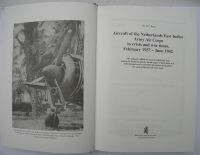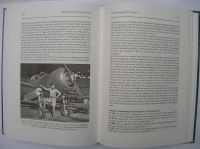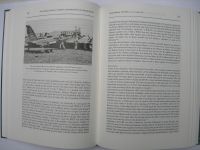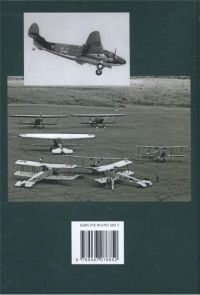Batavian Lion International | Aircraft of the Netherlands East Indies Army Air Corps in Crisis and War Times, February 1937 - June 1942
Reviewed by Hans van Gelder
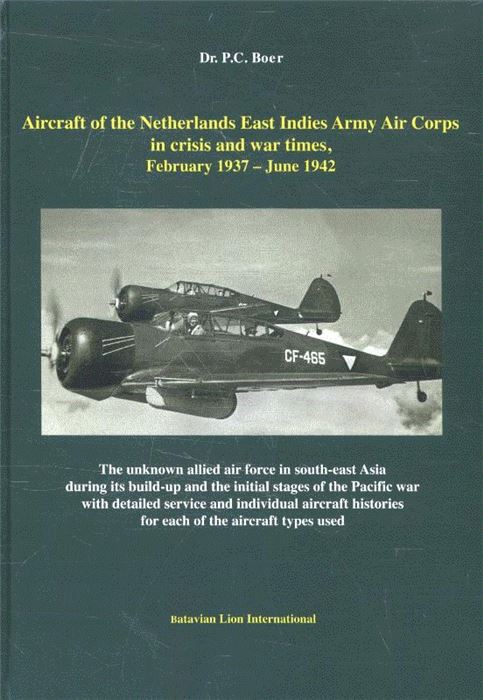
The unknown allied air force in south-east Asia during its build-up and the initial stages of the Pacific war with detailed service and individual aircraft histories for each of the aircraft types used.
Published: 2016
ISBN: 978 90 6707 685 2
Number of pages: 560
Price: ca. 50 Euros (in Holland)
Introduction
In the first half of the last century the vast colonial territory of the Dutch East Indies was defended by the KNIL, the Koninklijk Nederlandsch-Indisch Leger, or the Royal Dutch East Indies Army in English. This small army, more akin a policing force than an army, whose task mainly consisted of keeping the peace within the colony, had, after some experimentation, set up its own flying unit, the “Vliegafdeling” or short, VA in 1918. This VA was renamed Luchtvaartafdeling (LA) on August 1st, 1921. Hampered by lack of funds, build-up was slow and in the late twenties and early thirties the VA consisted of only three operational squadrons, one fighter and two recce squadrons, using a mixed bag of mostly Fokkers, De Havillands and Koolhovens.
Because of the growing tensions in the area due to an ever more aggressive Japanese policy towards its neighbors in the late twenties and early thirties, plans were discussed how to best defend the colony against the Japanese threat. The Dutch East Indies had huge natural resources, both agricultural and mineral: it was one of the world’s biggest producers of oil. In 1936, after much discussion the Dutch government decided that it was the LA and not the navy that was to defend the colony. For that purpose a large number of Glenn Martin 139 bombers were ordered in the USA. The increasing military importance of the LA resulted in yet another new abbreviation for the air arm, now named ML/KNIL, short for Wapen der Militaire Luchtvaart van het Koninklijk Nederlandsch Indisch Leger (Army Aviation Corps of the Royal Netherlands East Indies Army).
It is in February 1937, when the expansion and modernization of the air arm actually started, that the narrative of Peter Boer takes off. In the words of the author in his preface, the book is the first result of an operational logistic study into the use and expenditure of the ML/KNIL from that date up to and including June 1942. “The ML/KNIL, when the Pacific war erupted on 8 December 1941, was an important allied (army) air force with a strength of 365 aircraft in total of which 245 combat and transport types (including reserves). To compare, the RAF and RAAF in Malacca and Singapore fielded a total of approximately 250 combat aircraft (including reserves) at the same date.”
Decades of research by the author into the history of the ML/KNIlL lie within the covers of this book and it contains a treasure trove of information of the aircraft types used or ordered up to June 1942. Each chapter covers a single aircraft type and gives data on contracts and delivery, serials and construction numbers, the assignment and use of the aircraft and were applicable, the operational deployment of the aircraft, most chapters ending with a summary of individual aircraft histories. As an aid to modellers and historians, one or more paragraphs are given on paint schemes used to solve color or dating issues.
Aircraft types being discussed are:
Part 1 (trainers): Bucker Bu-131 Jungmann, Curtiss-Wright CW-22 Falcon, De Havilland (Australia) Tiger Moth, Fokker C.Vd and C.Ve, Fokker C.X, Fokker F.VIIb-3m, Koolhoven FK.51, Lockheed L212A and L12A, Ryan STM-E2 and ST-3, Technische Dienst LA ‘AL’ (Avro 504K copy), Technische Dienst LA ‘HL’ (de Havilland DH-9 copy).
Part 2 (medium bombers, transport, communications and attack aircraft): Brewster B340-14 and -17 Bermuda, Douglas C-47 and C-53 (DC-3), Douglas DB-7B and A-20A, Douglas DC-5, Fokker C.IV, Fokker T.IX, Glenn Martin 139 WH-1, -2 and –3A, incorporated and impressed private aircraft, Lockheed L18-40 Lodestar, North American B-25C Mitchell.
Part 3 (Fighter and reconnaissance aircraft): Brewster 339C (339-16), 339D (339-18) and 339-23, Canadian Car and Foundry Hurricane Mark X (Mark IIb), Curtiss Hawk I (P-6), Curtiss H-75A-7 Hawk, Curtiss P-40E-1-CU and P-40K-1-CU, Curtiss P-40E-CU and P-40E-1-CU (ABDAIR allocation), Curtiss Wright CW-21B Interceptor, Curtiss-Wright CW-22 Falcon, Fokker D.21, Hawker Hurricane Mark IIb (ABDAIR allocation).
Quite a number of these aircraft can be modeled in 1:32 scale, like the Bücker Bu-131 Jungmann, the Tiger Moth, the Ryan STM and ST-3 float plane, the Brewster 339C & D Buffalo, Fokker D.21, the Curtiss A-75A-7 Hawk, the Curtiss P-40E and the Hawker Hurricane MK IIb.
Thoughtfully -as this is a very thick book- for the convenience of the reader a reading guide is supplied to each part, in part 1 for those interested in the development of pilot and observer training, the one for part two delves into the development of the medium and dive bomber force and part 3 covers the development of the ML/KNIL fighter force.
Typical Pages
The author rounds off his opus with a number of appendices, of which appendix D is by far the most interesting for us modelers. In it he describes in detail the development of the camouflage colors in use with the ML-KNIL at the outbreak of the war. He reaches to the conclusion that the actual colors used, Camouflage-groen (camouflage-green), Donker groen (dark green) and Licht grijs (light grey), closely match the two greens and the grey the USAF used in Vietnam as a tactical camouflage for its aircraft. This comes as no surprise as both were developed in the field as a jungle camouflage.
Rear Cover
In my opinion this book is important as it fills a large void in the existing English language literature about the air forces and air war during the early stages of the war in the Pacific. Highly recommended for those with an interest in this period in history.
Book courtesy of my wallet.
© Hans van Gelder 2016
This review was published on Sunday, January 01 2017; Last modified on Sunday, January 01 2017

